Gallery opened: 18 Nov 2014
Updated: 17 Mar 2015
Two photos of loco added




The Raub Central Power Locomotive |
Gallery opened: 18 Nov 2014 |
"The object of this invention is to construct a perfectly balanced locomotive, in which the center of gravity is coincident with the vertical median line of the engine, and in which the motive power is located at the middle of the engine in a plane extending through the center of gravity. These two objects being attained, it is hardly possible to overestimate the value of the invention, since the locomotive will then be constructed upon correct principles and according to natural laws. It works from its center, and has its motive power situated in a plane extending through its center of gravity, and has therefore no dead weight."
This is less than informative, and there seems no point in trying to guess what line of reasoning the inventor followed to end up here.
What is certain is that vertical cylinders were recognised to be A Bad Thing very early in the history of locomotive design, because the up-and-down reaction forces meddled directly with the gravitational force (ie weight) holding the wheels against the rail and giving adhesion.
 | Left: The Raub Central Power Locomotive: 1881
|
The critics were merciless, as they often were in this period.
Angus Sinclair, in Curiosities of Locomotive Design. (From Development of the Locomotive Engine, Railway and Locomotive Engineering, September-December 1907, had this to say:
"When locomotives of this character (this seems to have been a reference to geared or jackshaft drive) have been built by men seeking for the best form of engine to perform the work of train hauling, their efforts were commendable, but at various times amateur locomotive designers, saturated with egotism and personal conceit, have produced ridiculous engines and sometimes their friends have tried to force them into use through stock-selling operations. (Probably a reference to the Holman scam) A notable case of this character was the Raub Central Power locomotive, Fig. 9, built at Paterson, N. J., in 1892. The people interested in this invention tried to push it through the influence of sensational articles in the daily newspapers, their claims for speed and efficiency being senseless exaggerations, but their efforts were in vain. As usual, they blamed its unpopularity upon the prejudice of railroad men and the engineering press. The engine had two small boilers, each with a fire door on each side and a smoke flue going back to the stack in the centre."
"Vertical cylinders were employed, transmitting the power through a central shaft. This engine was not only an oddity, it was a fake of the worst kind. Instead of an advance in design, it was returning to pioneer practices, being a product of combined ignorance, egotism and perversity."
No mincing of words there.
Note that Sinclair says it was built in 1892; 1881 seems to be just the date of the patent. It appears to have been built by the Grant Locomotive Works of New Jersey. What happened to it after that, if it was tested, and if it really was a deliberate stock-market swindle rather than just a pointless and inept invention, so far remains obscure.
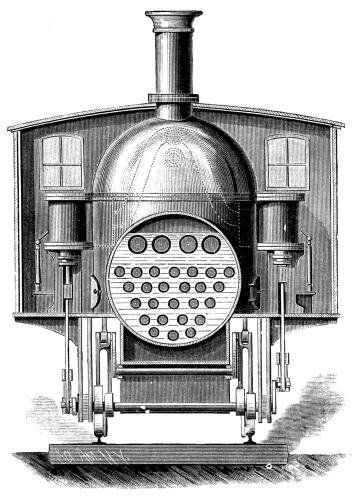 | Left: The Raub Central Power Locomotive: 1881
|
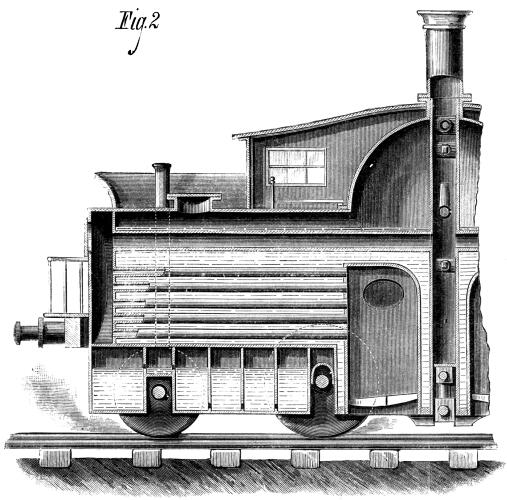 | Left: The Raub Central Power Locomotive: 1881
|
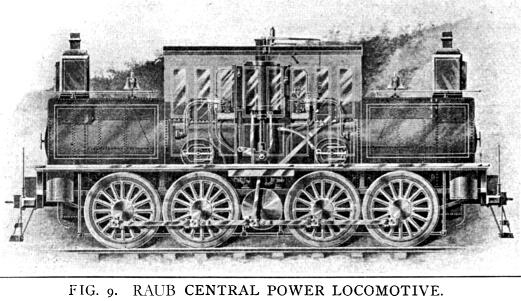 | Left: The Raub Central Power Locomotive: 1881
|
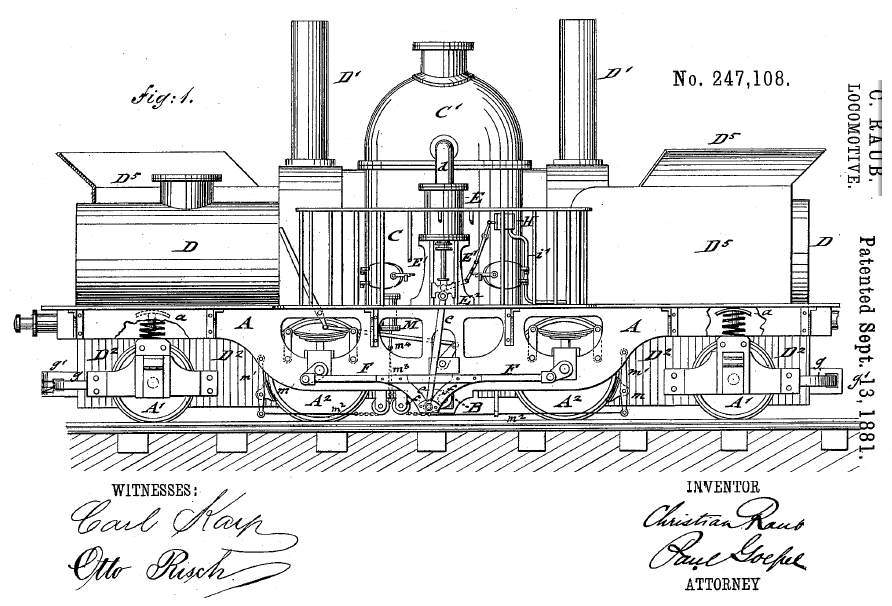
Above: The locomotive design was covered by US patent 247,108 issued to Christian Raub in 1881.
However the patent drawing appears to show two separate chimneys D',D' for each boiler instead of one central chimney. The jackshaft is barely visible at B, once again only driving two axles.
At last! Proof that a prototype really was built; the four-axle drive version.
On top of each boiler is a smoke duct leading to the central chimney. Note the two very small firedoors; there were two more on the otherside. There must have been very little room for swinging a shovel.
Source: The text in the picture says 'Locomotive Engineering, NY'.
Locomotive Engineering was an American "practical journal of railway motive power and rolling stock" and was published in the late 19th century. There is more info here.
Here it is with the cab, water tanks, and coal bunkers fitted. The brief article accompanying the pictures called it "...the great American junk-shop on wheels." which is hardly objective and sounds libellous. It went on: "Only one of these hybrid what-is-its have been built, and that is hibernating in a shed at Patterson, N J and has been for a couple of years."
Note the two enormous lamps, one at each end.
Source: Locomotive Engineering
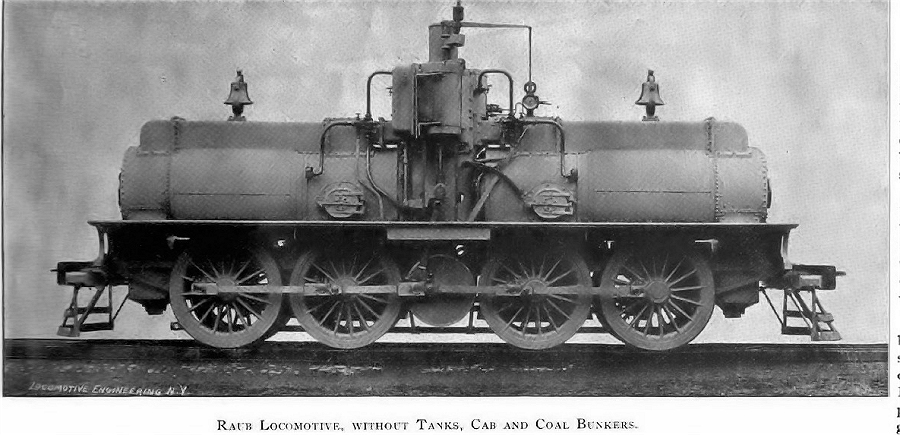
Left: The Raub Central Power Locomotive: 1881
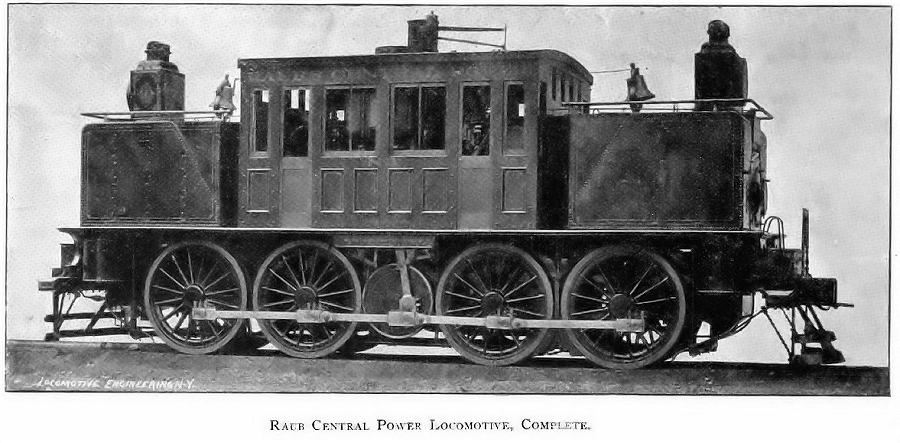
Left: The Raub Central Power Locomotive: 1881



